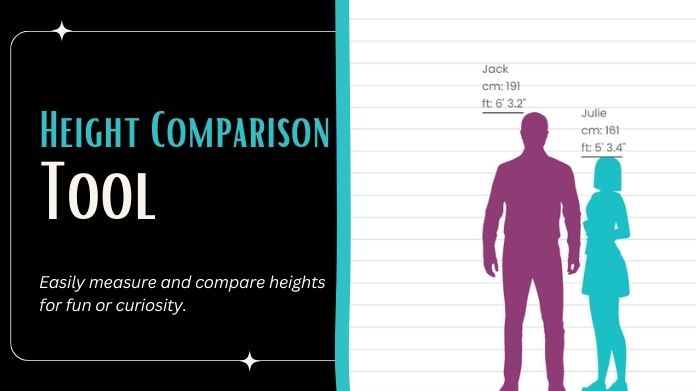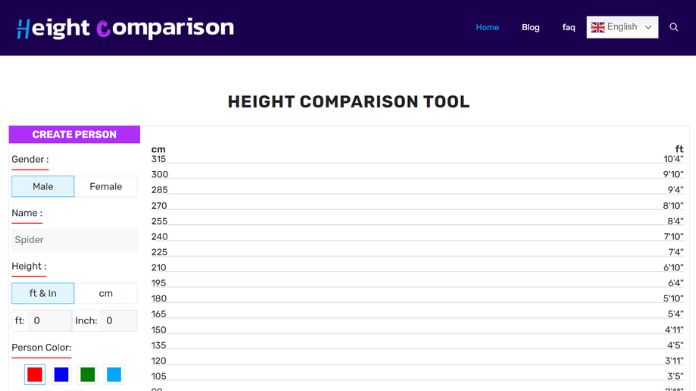In the age of digital innovation, the exploration of personal dynamics has taken on new dimensions, and one such intriguing facet is the comparison of heights.
The Height Comparison Tool emerges as a fascinating online resource, providing individuals with a dynamic platform to assess and compare their heights with others visually.
This height comparison guide navigates the landscape of height comparison tools, shedding light on the significance of such tools, the user experience they offer, and the broader implications of incorporating these online resources into our understanding of personal and relational dynamics.
Join us as we unravel the possibilities and insights that come with utilizing a Height Comparison Tool in the quest to explore the diverse landscape of human stature.
What is a Height Comparison Tool?

A Height Comparison Tool is a tool or device used to compare the heights of different objects or individuals. It typically involves a measuring mechanism or scale that allows for accurate measurements.
This tool is commonly used in various fields, such as architecture, engineering, sports, and health care, where height comparisons are essential for making informed decisions or assessments.
The tool can be manual or digital, providing a quick and reliable way to compare the heights of objects or people.
Significance of Height Comparison Tools
Height comparison tools are significant in various fields, including architecture, design, sports, and medicine. These tools provide an accurate and objective way to measure and compare the height of individuals or objects.
Height comparison tools ensure proportional and balanced structures in architecture and design. Architects and designers use these tools to determine the heights of different elements within a building or space, such as doors, windows, ceilings, and furniture. This helps them create visually appealing and functional designs.
In sports, height comparison tools are used to measure and compare athletes’ heights, especially in sports like basketball, volleyball, and high jump.
These measurements are essential for scouting, team selection, and creating fair competitions. Height comparison tools also help track an athlete’s growth and progress.
In medicine, height comparison tools are used for various purposes. For instance, doctors use them to assess a patient’s growth and development, especially in children.
Height measurements are essential to determining a child’s growth pattern and detecting potential growth disorders or abnormalities.
Overall, height comparison chart provide valuable information and data that aid decision-making processes, performance evaluation, and accuracy and precision in various fields.
User Experience of Height Comparison Tools

Height comparison tools are increasingly popular among users who want to compare their height with others or know how they measure up to specific standards.
These tools can be found on various websites and mobile applications, and they provide a convenient way for users to understand height differences visually.
Another important factor is the accuracy of the height measurements. Users rely on these tools to provide accurate and reliable information, so any inaccuracies or inconsistencies can be frustrating and may lead to a negative user experience.
Visual representations are also important in height comparison tools. Users should be able to see the height differences clearly, whether through side-by-side comparisons or graphical representations.
The visual aspect adds depth and context to the user’s understanding of height differences, making the tool more informative and enjoyable.
Lastly, the responsiveness and speed of the tool can significantly impact the user experience. Users expect the tool to load quickly and provide immediate results without lag or delays. A slow or unresponsive tool can frustrate users and encourage them to reuse it.
Overall, a positive user experience with height comparison tools depends on ease of use, accuracy, customization options, visual representations, and responsiveness.
By considering these aspects, developers can create user-friendly, reliable, and engaging tools for users looking to compare heights.
Winding Up!!
Height Comparison Tool emerges as a straightforward online resource for gauging height against established norms.
Whether for personal curiosity or as a practical tool in healthcare, it offers quick insights into how individual or group stature aligns with expected averages.
Simple yet effective, this tool provides a window into understanding and comparing heights in a convenient online format.






